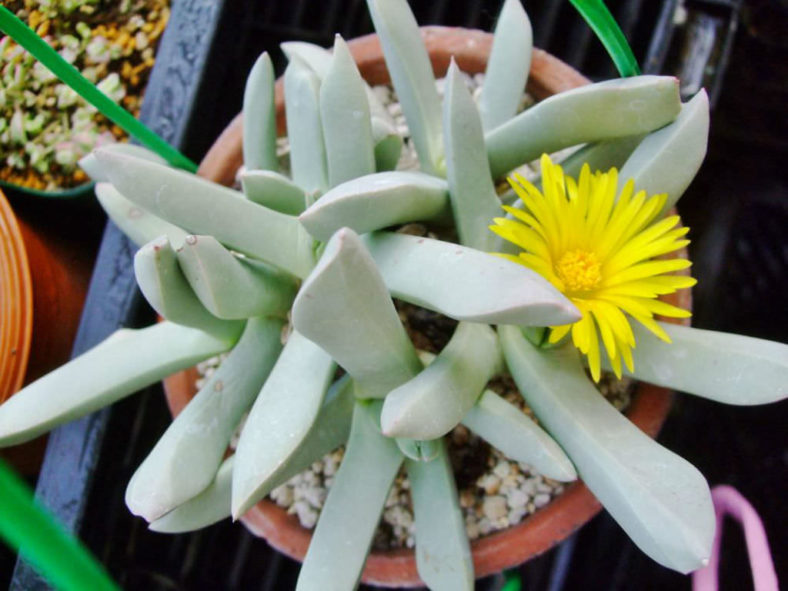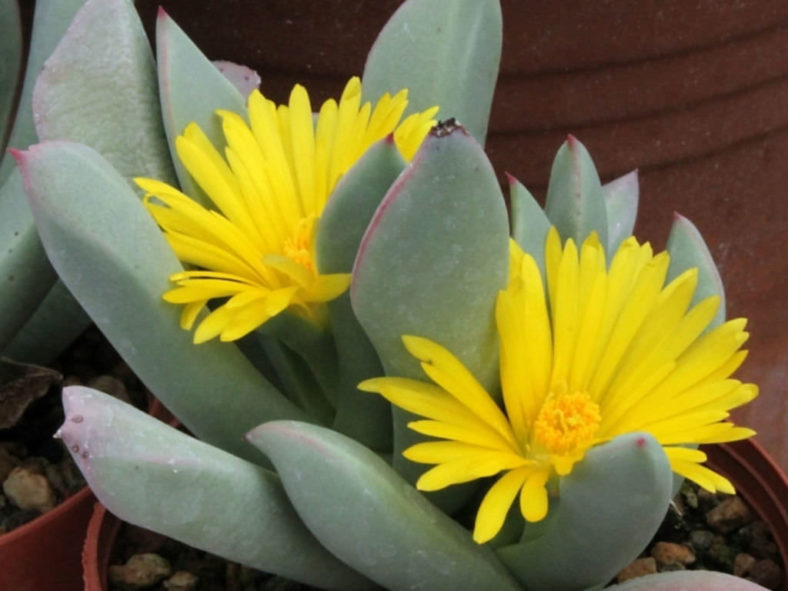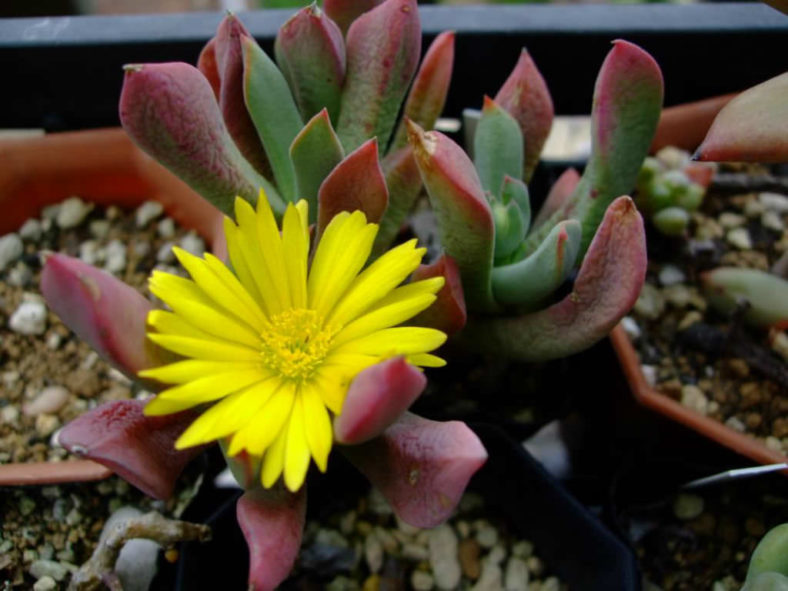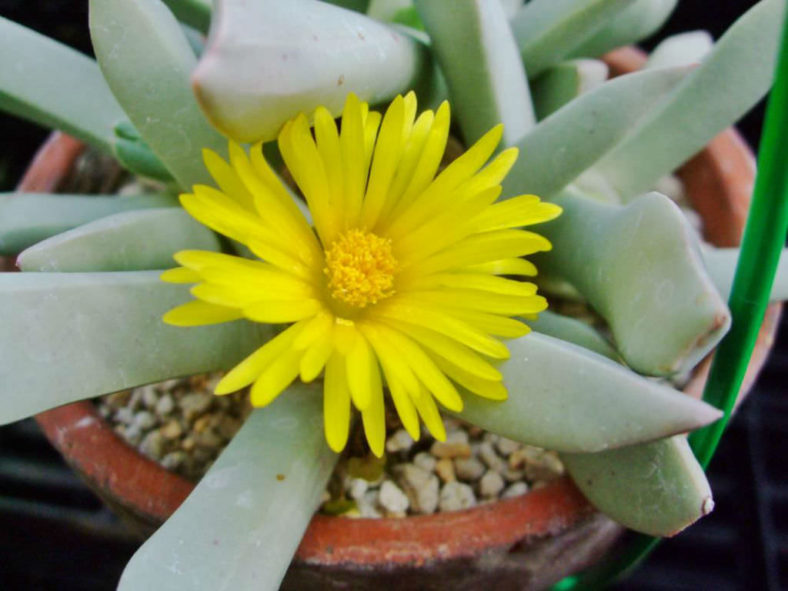Scientific Name
Schwantesia triebneri L. Bolus
Scientific Classification
Family: Aizoaceae
Genus: Schwantesia
Etymology
The specific epithet "triebneri" (pronounced "TRIBE-ner-ee") honors Wilhelm Triebner (1883-1957), a German horticulturist and plant collector, who went to what is now Namibia in 1904 as part of his military service and later remained there as a succulent gardener and farmer.
Origin
Schwantesia triebneri is native to South Africa (Northern Cape).
Description
Schwantesia triebneri is a small succulent that forms a compact clump of fleshy, pale grey-green leaves arranged in pairs. The leaves are erect to spreading, narrow, triangular in cross-section, and end in a short, sharp, pink point, measuring up to 2.4 inches (6 cm) in length, 0.4 inches (1 cm) in width, and 0.2 inches (5 mm) in thickness. They are velvety, especially when young, and often with margins tinged in shades of red.
The flowers are yellow and appear on a short stalk in winter. They can reach up to 2 inches (5 cm) in diameter. The fruits are usually 5-locular capsules with tiny pear-shaped seeds.

How to Grow and Care for Schwantesia triebneri
Hardiness: USDA hardiness zones 9b to 11b: from 25°F (-3.9°C) to 50°F (10°C).
Mesembs are primarily adapted to relatively predictable rainfall patterns rather than extreme drought and irregular rainfall. Total rainfall may be extremely low, but water is available at least seasonally or through fog and condensation. This leads to or allows plants that are not especially large, sometimes very small, and affects how they need to be treated in cultivation.
The basics of care are simple: free-draining soil, plenty of sun and ventilation, and regular light watering in the right season. Yet the difficulties are endless, trying to adapt to the Mesembs' adaptability and to follow their growth habits in your particular conditions.
These plants require a loam-based compost with extra drainage material such as horticultural grit or perlite. They all like good light conditions and plenty of ventilation.
Some are relatively cold-hardy and can even survive mild winters outside. Most will survive temperatures down to the freezing point. Some Mesembs begin to grow in the fall as temperatures drop and days get shorter.
Learn more at How to Grow and Care for Mesembs.
Links
- Back to genus Schwantesia
- Succupedia: Browse succulents by Scientific Name, Common Name, Genus, Family, USDA Hardiness Zone, Origin, or cacti by Genus
Photo Gallery
Click on a photo to see a larger version.


